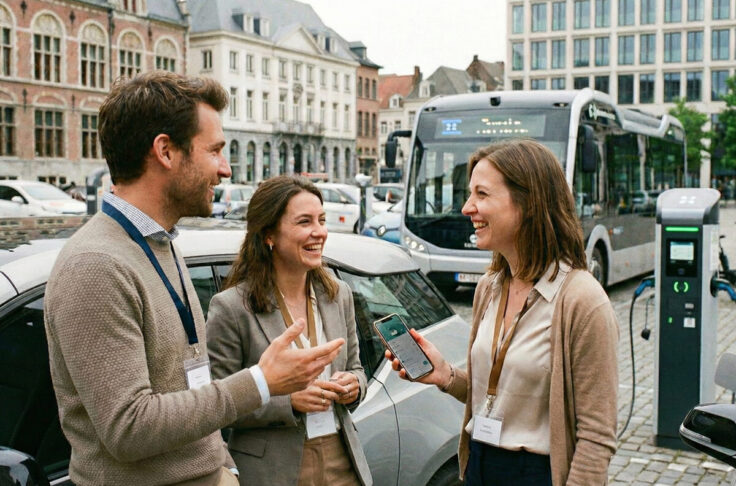Reshaping Mobility Post-Pandemic (pt. 2)
Summary
Following the first part of our “Reshaping Mobility Post-Pandemic” series, we now focus on how the micromobility space is reacting to the pandemic. Overall, we see micromobility operators coming out stronger and users more likely to rely on micromobility services for transportation needs.

As we are all well aware of, COVID-19 changed our behavior, risk perception and everyday-life to a degree that we haven’t witnessed for quite some time. This opinion piece will focus on the facts how our mobility patterns changed since the start of the pandemic, where we stand at the moment and why micromobility is currently on the path to become stronger afterwards.
How mobility patterns changed in the phases of shock and adaptation
We all know how the pandemic strongly reduced the number of trips undertaken during the crisis. Cities, regions and entire countries went into lockdown and even where they didn’t, unnecessary trips were canceled, shortened and/or the mode of choice altered. Regions in lockdown reduced the mobility activity by approx. 60-80 %. Many shared micromobility operators were forced to close their business for a couple of weeks or reduce service strongly.
With the local reduction of infection numbers, easing of lockdown measures and adapted behavioral patterns, the post-COVID reality has begun.
In many global cities, transit options suffered the most and continue to struggle to regain pre-COVID passenger numbers. Individual mobility options such as the private car, motorbike or bike became (even) more popular than they were before.
However, for shared mobility there was not immediately a clear pattern of the short- to medium-term impacts visible. Most expert opinions range in between rather neutral growth perspectives (e.g. BCG 2020) to clearly positive growth scenarios. In the second case, the authors argue that the current crisis will benefit the shared mobility sector due to a speed up behavioral change – in other words, exploiting a ‘window of opportunity’.
Most of the above trend scenarios have one strong downside: They try to predict in times of high uncertainty. Therefore, in the next section I want to look at the quantifiable, empirical evidence. Spoiler: it seems micromobility is currently on its way to help reshape global urban mobility patterns.
Why micromobility is likely to exit the crisis in a stronger position
Utilization rates are climbing again
After a stronger, lockdown-related drop in the number of rentals in almost all global markets, the fleet usage strongly picked up again. The example of Paris showcases that some markets already surpassed the pre-COVID-levels. Users (regain) trust in micromobility solutions and acknowledge the advantage of driving in open air and with distance to others. Operators, such as Indian Bounce, support this trend by increasing sanitation efforts.
Operators fleet size increase
Throughout the last months of uncertainty, operators kept investing into their future service offer by increasing fleet sizes and even launching in new cities. The sector of moped sharing for instance, continued to increase the fleet size by a substantial amount before, during and after the COVID-19 peak (+44% since August 2019) and even added more than 9,000 shared mopeds in crisis-torn Q2 2020. This equals an increase of +10.5% of the global capacity during the most intense COVID months (at least in most of the global moped sharing markets).
Financial investor trust
Despite fears in public debate, many financial investors kept their positive outlook of the shared mobility industry in general and micromobility in particular. In May 2020, we analyzed how the stock market responded to micromobility stocks during the crisis. Since then, the outlook has become even more positive as for e.g. the all-time high of NIU stocks prove (the company is supplying many shared mobility operators). With a share price of $22.9 USD in early July, it hit a level of more than double the share price compared to immediately before the crisis.
Fresh company investments apart from the stock exchange are frequently happening, too. In the past month, shared mobility operators have received considerable new investments and partners, such as voi ($30 million USD), YEGO (€ 7.5 million EUR), WeMo ($3.3 million USD) and GoTo Global ($19 million USD).
Buying trend of micromobility vehicles for private use
On top of the above mentioned industry-specific trends, the demand for privately-owned bikes, e-bikes, e-mopeds and e-kickscooters is rising sharply. And this is good news for shared mobility operators. Reason: The wider acceptance of micromobility options will also decrease the barrier to the shared mobility service registration and further increase the likelihood of shared micromobility service usage. Micromobility is stepping up the population penetration speed.
In a nutshell, we believe that micromobility is currently on its way to reshape global urban mobility patterns. After the first COVID-shock, micromobility shows many symptoms of becoming a (even) more accepted mobility solution. Clear signs for this trend are recovering utilization rates with new seasonal records, fleet increases by operators, the trust of financial investors as well as the current supporting buying trend towards privately-owned micromobility vehicles.


